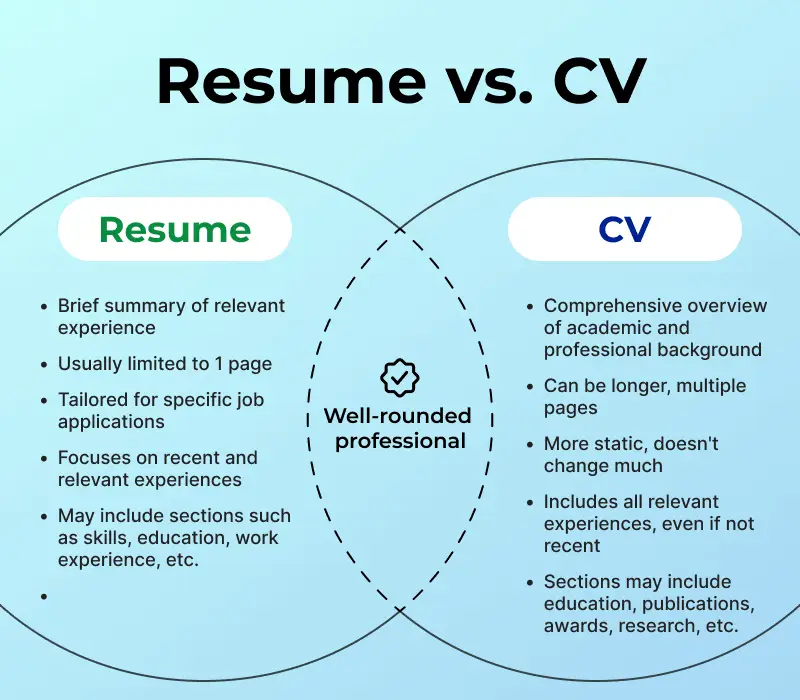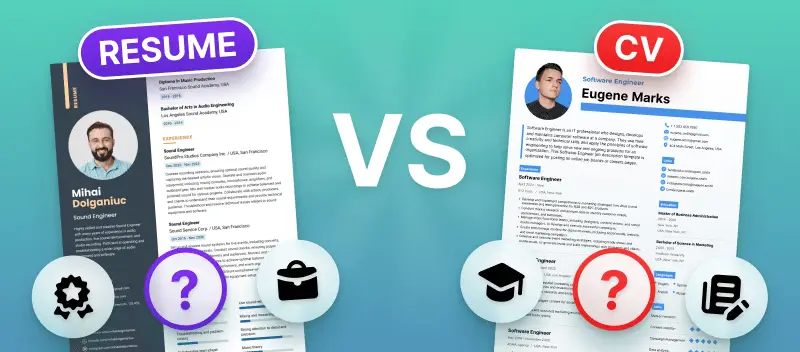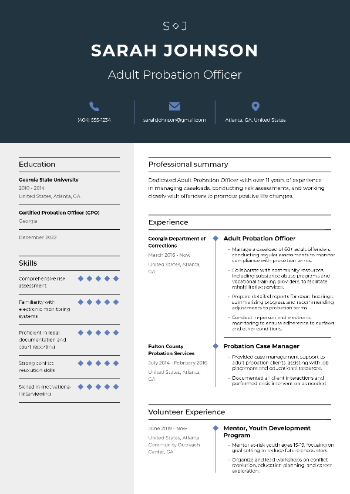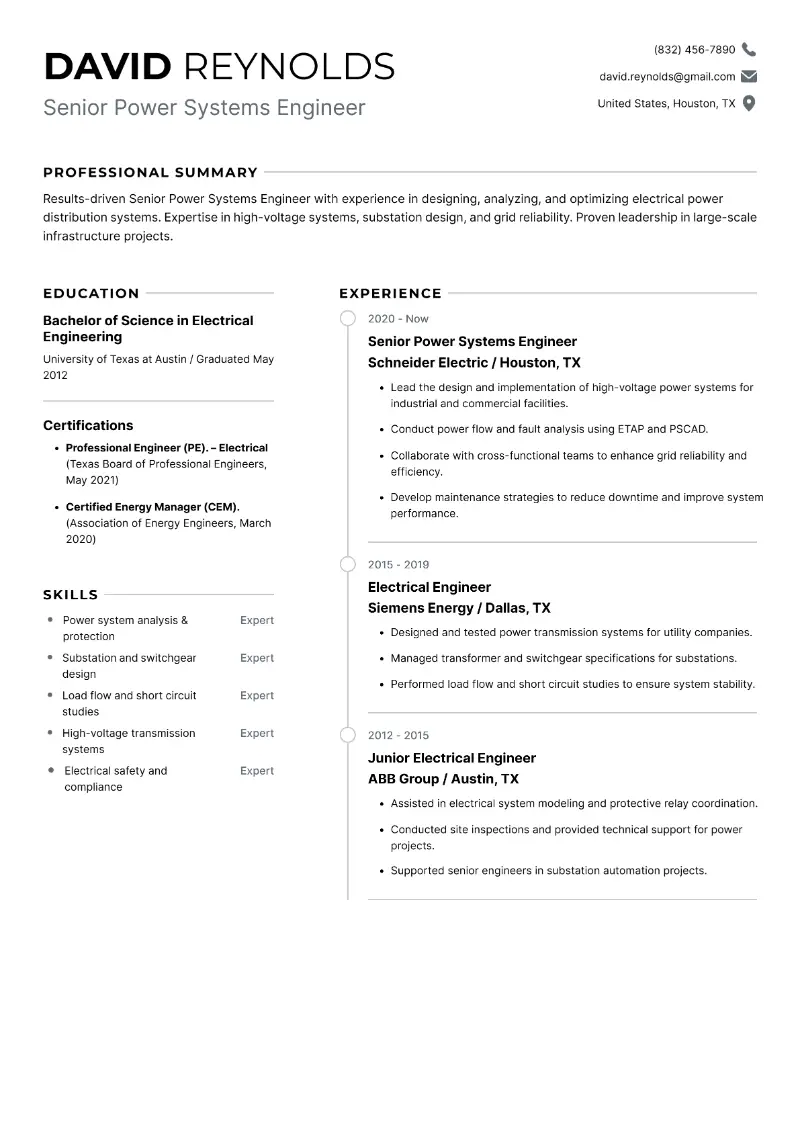Hello, fellow job seekers!
When you begin job hunting, you're not just chasing opportunities but crafting an image of the ideal candidate.
To achieve this, it's time to wield the mighty tools of career marketing – your very own resume and CV.
Amid this high-stakes game, these documents are your champions. But don't be fooled – they're not interchangeable! But what is the difference between a resume and a CV?
“You can learn new things at any time in your life if you're willing to be a beginner. If you actually learn to like being a beginner, the whole world opens up to you.”
Are you ready to embark on this enlightening journey that will supercharge your job search? Let's dive headfirst into the dynamic realm of a resume and a CV, uncovering the magic that sets them apart and propelling your job hunt to the next level!
Resume vs CV: A Voyage of Discovery

Imagine yourself as an intrepid explorer scaling the heights of your professional aspirations. As you ascend, you wield two formidable weapons: a sleek and efficient resume and a robust and comprehensive CV
These instruments are your compasses through the uncharted territory of success. But hold on a moment – don't mistake them for interchangeable tools.
Each possesses its distinct superpowers tailored to conquer different corners of the job-searching landscape. The burning question is: Which one aligns with your journey?
Fear not, for the answer lies ahead!
What Is a Resume?

Let's shine a spotlight on the resume – a true masterpiece in brevity and impact. Think of it as a quick glimpse or a dynamic snapshot capturing your professional identity, all neatly condensed within just a page or two.
The top reasons for a resume being rejected are typos or poor grammar (77%), unprofessional email address (35%), and no quantifiable results (34%). (CareerBuilder)
A resume is your rapid pitch, the concise conversation that offers a clear overview of your skills, work history, and educational journey. Imagine it as a meticulously choreographed performance, where each move serves a purpose. Here, your qualifications step into the limelight, and your potential takes center stage.
Create your professional Resume in 10 minutes for FREE
Build My Resume
Sections of a Resume
Each section of a resume serves a distinct purpose, allowing you to showcase your professional qualifications, skills, and experience to potential employers. Here's a breakdown of the common resume sections along with their contents:
| Resume Section | Description |
|---|---|
| Contact Information | Provide essential personal details for communication. List your full name, phone number, email, and physical address. Add the LinkedIn profile URL (optional). |
| Professional Summary | This concise introduction highlights your skills and critical contributions, setting the stage for the rest of your document. Limit it to 2-3 sentences describing your experience, skills, and career goals. |
| Skills and Technology | This list of relevant resume skills showcases your expertise and targets the role you're applying for. Highlight your technical, soft, and transferable skills applicable to the job. |
| Work Experience | This section details your previous jobs and responsibilities. Each listing should consist of the job title, company name, location, dates of employment, and bullet points describing key achievements and responsibilities. Aim for 5-8 bullet points per entry within the past 15 years to avoid age bias. |
| Education | It presents information about your educational background and any relevant courses. State the course name, degree earned, major, university name, graduation date, and relevant honors or awards. |
| Certifications & Licenses | This section lists your professional certifications or licenses. Indicate the certification name, the issuing organization, and the date obtained. |
| Projects | Highlight relevant programs you've worked on. Indicate the project name, add a brief description, your position, the technologies used, and the outcomes. |
| Awards and Honors | List any recognition you've received for your achievements. Tell the award name, issuing organization, date received, and a brief description. |
| Volunteer Work | Showcase unpaid work that aligns with the company values. Write the organization name, the position you held, dates of involvement, and tasks performed. |
| Languages | Indicate languages you're proficient in. List the languages you know and your proficiency level (e.g., fluent, professional, basic). |
| Publications | Include articles, papers, or books you’ve authored or co-authored. Provide the title, name, date, and a brief context if relevant to the role. |
Use keywords that resonate with the industry's language, ensuring your resume breezes through the digital gatekeepers, also known as the ATS or Applicant Tracking System.
To find these keywords for resume, delve into the job posting and company research. It's not just about knowing your duties. It's about comprehending how your role contributes to the company's triumphs.
Resume Examples
Professional Summary
Detail-oriented project manager with 8 years of experience in the marketing sector. Proven ability to lead teams, manage budgets, and deliver projects on time. Passionate about utilizing data to inform marketing strategies and enhance customer engagement.
Work Experience
Project Manager
Launch Marketing Group, Austin, TX
April 2021 – Present
- Spearhead a national marketing campaign that boosted client engagement by 40% across multiple platforms.
- Create and maintain project timelines and budgets, leading to a 20% increase in operational efficiency.
- Coordinate efforts among creative and marketing teams to ensure project goals were met effectively.
Marketing Coordinator
Tech Innovators Inc., Austin, TX
June 2018 – March 2021
- Executed successful marketing campaigns that led to a 30% increase in sales for newly launched products.
- Managed relationships with vendors, negotiating contracts that reduced overall costs by 15%.
- Utilized market analysis to tailor marketing strategies to target audiences effectively.
Assistant Project Manager
Green Solutions, Inc., Austin, TX
January 2017 – May 2018
- Supported project management teams in the execution of environmental initiatives, ensuring adherence to timelines.
- Developed project documentation and reports for stakeholder presentations.
Education
Texas State University, San Marcos, TX
Bachelor of Science in Marketing
Graduated: December 2016
Skills
- Project Management
- Budget Management
- Digital Marketing
- Vendor Negotiation
- Data Analysis
- Microsoft Office, Trello, Asana
Certifications
- Project Management Professional (PMP)
- Google Analytics Certified
What Is a CV?

Let's now turn our gaze towards the CV, a masterpiece that paints a detailed picture of your journey. Imagine it as a captivating tapestry woven with your achievements, experiences, and milestones.
Unlike a mere list, a CV narrates your professional odyssey, with chapters illuminating significant moments. It's a canvas where your story unfolds with intricacy.
Create your professional CV in 10 minutes for FREE
Build My CV
Components of a CV
Let's look at the core segments of a CV and their integral contents:
| CV Section | Description |
|---|---|
| Contact Information | This section encompasses your full name, phone number, email address, and physical location. Prospective employers need to have a means of reaching out to you. |
| Personal Statement/Summary | A concise paragraph that highlights your professional aspirations, competencies, and expertise. This serves as a glimpse into your career trajectory. |
| Professional Experience | Much like a resume, this section outlines your work history in reverse chronological order. Detail job titles, company names, tenure, responsibilities, and accomplishments. |
| Education | Outline your educational background, commencing with your most recent degree. Include institution names, degrees earned, fields of study, graduation dates, and accolades. |
| Skills & Qualifications | On your CV, list additional credentials or certificates that are pertinent to the role. |
| Research Projects & Publications | Catalog any research papers, articles, books, or publications you've contributed to or authored. Add titles, publication particulars, and co-authors, if applicable. |
| Awards and Honors | Highlight academic, professional, or research awards you've garnered. Specify the award, awarding body, and the date of recognition. |
| Skills | Enumerate both technical and soft proficiencies that align with your field, including programming languages, software proficiency, leadership acumen, and communication prowess. |
| Certifications | Incorporate professional licenses, or completed training programs pertinent to your career path. |
| Professional Memberships | Chronicle your affiliation with relevant organizations or associations. Include the organization name and your membership status. |
| Languages | Showcase your communication capabilities, encompassing your native tongue and any other languages you are proficient in. |
| Grants & Fellowships | Provide details of any funded research or study opportunities you’ve received. Add the name, institution, amount (if relevant), and duration. |
Utilize evocative language that transports the reader into each scenario, painting a vibrant picture of your contributions. This is where the dots connect, demonstrating how each role builds upon the last, forging a coherent narrative.
Remember, the content of your CV may vary based on your field, experience, and career trajectory.
CV Examples
Profile
Creative and analytical project manager with a robust background in marketing and communications. Over 8 years of experience managing high-impact projects and campaigns that align with organizational goals. Skilled in leveraging data-driven insights to improve strategies and outcomes.
Professional Experience
Launch Marketing Group, Austin, TX
Project Manager
April 2021 – Present
- Lead the development and execution of innovative marketing campaigns for high-profile clients, resulting in significant increases in engagement metrics.
- Implemented a new project management software, enhancing team collaboration and visibility into project status.
- Analyze performance data to refine marketing strategies, contributing to a 40% rise in digital interactions.
Tech Innovators Inc., Austin, TX
Marketing Coordinator
June 2018 – March 2021
- Orchestrated comprehensive marketing plans for new technology products, contributing to a 30% increase in market share.
- Conducted extensive market research and competitor analysis to inform product positioning and promotional strategies.
- Managed social media platforms, achieving a 60% growth in follower engagement and brand loyalty.
Green Solutions, Inc., Austin, TX
Assistant Project Manager
January 2017 – May 2018
- Assisted in managing sustainability projects with a focus on community outreach and education.
- Developed detailed project reports and facilitated meetings with stakeholders to ensure alignment on objectives and outcomes.
- Contributed to a 25% increase in project efficiency through improved planning and coordination.
Education
Texas State University, San Marcos, TX
Bachelor of Science in Marketing
Graduated: December 2016
- Achievements: Dean’s List, Member of Marketing Society
Professional Development
- Project Management Professional (PMP) (2022)
- Google Analytics Certification (2023)
- Workshops: Digital Marketing Trends and Agile Project Management
Core Competencies
- Project Management
- Strategic Marketing
- Communication Skills
- Analytical Thinking
- Team Leadership
- Software Proficiency: Microsoft Office, Trello, Asana, Google Analytics
Professional Memberships
- Project Management Institute (PMI)
- American Marketing Association (AMA)
The Impact of Size
Resume
Resumes specialize in brevity, akin to a short story that leaves the reader intrigued. A mere page or two showcases your skills, experiences, and potential. It's a peek at your most remarkable moments, designed to captivate and kindle curiosity.
In this confined space, each word holds weight, ensuring every detail contributes to the tale you're weaving. And within the realm of resumes, a cover letter often accompanies them.
Almost 90% of recruiters believe that the job market now is candidate-driven. Job seekers have access to more offers and opportunities than ever before. (MRINetwork)
CV
In contrast, CVs grant you breathing room. There's no universally defined limit. The CV becomes your canvas if your achievements span vast – degrees, publications, and more.
Picture it as sharing your life story, inviting readers to explore your journey. This elongated format allows you to lavish each chapter with the attention it merits, infusing context and depth into your professional voyage.
What Goes Inside
Resume
Resumes thrive on tailoring. Much like a tailor designs a suit to fit, each resume must be tailored to the role you seek. You emphasize skills aligned with the position, underscore pertinent work history, and interweave your individuality.
Your resume unfolds as your unique story, curated for a specific audience – potential employers. Infuse power keywords to ensure your resume sails through the Applicant Tracking System.
An Applicant Tracking System (ATS) is a digital tool streamlining the hiring process. It acts as a gatekeeper, organizing and managing resumes and job applications. ATS software scans and filters these documents, hunting for keywords, skills, and qualifications that appear in the job description.
3 out of 4 qualified candidates have been rejected by an ATS due to the software being unable to read their resumes. This proves the importance of readable font and organized structure of your documents. (Forbes)
This automated mechanism accelerates application review yet accentuates the need to tailor your resume. By aligning with the requirements and employing relevant keywords, you heighten your odds of passing ATS scrutiny and landing in human hands.
CV
On the flip side, CVs paint the entire panorama. It's a comprehensive gallery of your career journey. Education, research, publications, exhibitions – each accomplishment finds its stage, no matter how intricate.
The CV grants you the platform to exhibit the complete spectrum of your abilities, offering a sweeping view of your expertise. Here, you illuminate not only your qualifications but also your narrative, essence, and voyage.
CV vs Resume: Formatting
| Resumes | CVs | |
|---|---|---|
| Length | Keep it concise, ideally one page resume, two if necessary. | Can be longer, detailing your entire academic and professional history. |
| Font | Professional font like Arial, Calibri, or Times New Roman, size 10-12. | Similar to resumes, use a professional font. |
| Margins | Employ 1-inch margins on all sides. | Standard margins are acceptable, adjust if there's more content. |
| Headings | Bold and slightly larger font for section headings on resume. | Defined sections with bold headings. |
| Bullet Points | Add bullet points for achievements and responsibilities. | Not typically used; more detailed information is provided. |
| Design | Clean and minimalist, with clear sections and white space. | Plain layout preferred; emphasis is on content. |
Resume vs CV: Unveiling Your Choice

Let's dive into a thought-provoking question: Which tool should you wield?
If your sights are set on traditional office roles or embarking on a career shift, the resume emerges as your trusty companion. It's concise, impactful, and a precision-targeted missile – designed to seize attention in a heartbeat. Visualize your resume as a finely aimed arrow that hits the bullseye accurately.
However, the CV takes the stage if the allure of academia, research, or specialized domains beckons. This is the master key that unlocks opportunities, providing a canvas to display your full spectrum of achievements and potential.
Your CV acts as your professional passport, granting access to roles where your entire journey holds paramount importance. It's a complete chronicle that spotlights your evolution, expertise, and contributions.
FAQ
- Should I include a photo?
- Including a photo in your resume or CV is generally not recommended in the US, Canada, the UK, and some other countries. It is more common in Europe, but it's not a strict requirement. Employers in Asian countries may expect a photo as part of the application. Plus, there are industry-specific considerations.
- How do I handle employment gaps?
- Be prepared to explain them honestly, whether it was due to personal reasons like being a stay-at-home mom or dad, education, or travel. Consider including volunteer work or continuing education in those periods.
- How far back should I go in listing work experience?
- Generally, it is recommended to include the past 10-15 years of relevant work experience. Only include older experience if it is particularly relevant to the job you are applying for.
- Should I send a cover letter with my resume or CV?
- Yes, it allows you to expand on your qualifications, explain why you are a good fit for the job, and demonstrate your interest in the position.
- Can I convert my resume into a CV or vice versa?
- Yes, but it requires reformatting and reorganizing content. A resume can be expanded into a CV by adding detailed sections, while a CV can be condensed into a resume by focusing only on the most relevant information.
- Are there specific keywords I should include in my application?
- Yes. Tailoring your document with keywords from the job description helps ATS identify your resume or CV as relevant. Keywords often include specific skills, qualifications, and industry terms.
Conclusion: Forging Your Path Ahead
Resumes and CVs play pivotal roles in the intricate tapestry of your career. They're not just papers. They're doorways to possibilities, glimpses into the essence of your professional identity.
As you navigate the ever-evolving landscape of job applications, consider what is the difference between a resume and a CV, the strengths of each document, and wield them strategically.
Remember, the resume is your debut act, a captivating prologue to your professional narrative. It's your moment to seize attention swiftly and highlight your most pertinent skills and experiences.
Crafting a compelling resume, though, demands a delicate equilibrium between showcasing your value and maintaining conciseness.
Conversely, the CV is your magnum opus, a complete portrayal of your journey, and a testament to your expertise. It's here that every achievement, regardless of intricacy, stands in the spotlight, inviting the reader to delve deep into your accomplishments.
Creating a robust CV is akin to weaving a story that traces your professional growth, connecting each chapter with significance.
Remember that your resume and CV are active entities in this ever-evolving world. With every milestone achieved and new horizon conquered, these documents evolve alongside you.
Now, march forward and conquer the job market with unwavering confidence and a resolute purpose!



















